Søg
Produktfamilier
Produktfamilier (71)Produktmodeller
Produktmodeller (713)Applikationer
Applikationer (2257)Events
Events (4)Elektroder
Elektroder (537)Kolonner
Kolonner (155)Software
Software (269)Tilbehør
Reservedele (2314)Dokumenter
Dokumenter (2636)Andet indhold
Indhold (106)Nyheder
Nyheder (73)Indblik
Indblik i industrien (178)Articles & Service Offerings
Support & service (82)On-demand webinarer
Webinars (77)2060 TI Process Analyzer
Integreret løsning til 24/7 online overvågning af kritiske kemiske parametre i industrielle processer og spildevandsstrømme med titrering, pH, ISE, ledningsevne, coulometri eller fotometri metoder.
2060 IC Process Analyzer
Komplet og fleksibelt system til online overvågning af ioniske forbindelser i vandige medier fra ng/L til % koncentrationer.
2060 the NIR
En nøglefærdig løsning til procesanalytisk teknologi (PAT)
STRAm
STRAm
NanoRam
State-of-the-art håndholdt 1064 nm Raman instrument til non-destruktiv identifikation og verifikation af indkommende råmaterialer som fx API'er, hjælpestoffer og mellemprodukter.
QTRam
QTRam
ProTrode pH-sensorer
Forbedr din proces med inline pH-målinger
Process Raman Analyzers
Explore our cutting-edge Raman systems, including the PTRam Analyzer, 2060 Raman Analyzer, and 2060 RISE to enhance process analysis capabilities.
Eksplosionssikre procesanalysatorer
State-of-the-art beskyttelse til online procesanalyse.
VIONIC powered by INTELLO
Fremtiden for elektrokemi er ren. VIONIC: ét instrument, ren opdagelse.
2.1001.0110
OMNIS Basic Titrator without stirrerInnovative, modular potentiometric OMNIS Titrator for endpoint titration. Thanks to 3S Liquid Adapter technology, handling chemicals is safer than ever before. The titrator can be freely configured with measuring modules and cylinder units and can have a stirrer added as needed. If required, the range of functions of the OMNIS Basic Titrator can be extended with a corresponding software function license. Control via PC or local network; Can be supplemented with magnetic stirrer and/or rod stirrer; Various cylinder sizes available: 5, 10, 20 or 50 mL; Connection option for up to four additional titration or dosing modules for additional applications or auxiliary solutions; Liquid Adapter with 3S technology: Safe handling of chemicals, automatic transfer of the original reagent data from the manufacturerMeasuring modes and software options:; Endpoint titration: "Basic" function license; Endpoint and equivalence point titration (monotonic/dynamic): "Advanced" function license; Endpoint and equivalence point titration (monotonic/dynamic) with parallel titration: "Professional" function license;
2.1008.2010
Eco Titrator SaltThe compact Eco Titrator with integrated magnetic stirrer and touch-sensitive User Interface is ideal for routine analysis. It provides GLP-compliant results with minimum space requirements at all times (approx. DIN A4).The Eco Titrator Salt plus offers you the complete package for the analysis of chloride in a wide variety of samples. The package contains a titrator, a 10 mL cylinder unit and an Ag Titrode, a maintenance-free electrode for precipitation titration with silver nitrate.
2.1010.1010
OMNIS Sample Robot S Pick&PlaceOMNIS Sample Robot S with a "Peristaltic" (2-channel) pump module and a Pick&Place module in addition to extensive accessories for the direct transition to fully automatic titration. The system provides space in two sample racks for 32 sample beakers of 120 mL each. This modular system is supplied completely installed and can thus be put into operation in a very short time.The system can also be extended upon request to include two additional peristaltic pumps and another Pick&Place module, thus doubling the throughput. If additional workstations are required, then this Sample Robot is already able to be expanded to become an L-sized OMNIS Sample Robot, thus enabling samples from seven racks to be processed in parallel on up to four Pick&Place modules and quadrupling the sample throughput.
2.858.0020
858 Professional Sample Processor – PumpThe 858 Professional Sample Processor – Pump processes samples from 500 µL to 500 mL. The sample transfer takes place either with the installed bidirectional two-channel peristaltic pump or with an 800 Dosino.
2.921.1310
NIRS XDS MasterLab AnalyzerRapid, nondestructive analyses of tablets, capsules and other solid-state dosage forms.The NIRS XDS MasterLab Analyzer enables the rapid, nondestructive analyses of solid-state dosage forms such as tablets, capsules, film-coated tablets, gel tablets and gel capsules for manufacturers in the pharmaceuticals industry. Solids in vials can also be analyzed with the NIRS XDS MasterLab Analyzer. The analysis takes place in reflection or transmission mode. The sample input proceeds via a sample slide that can be moved in x and y direction and that is designed for trays with several tablets and/or vials. Analyses of individual samples are optimized with an iris. An optionally available coarse granular sample cell for coarse granular substances extends analysis to include practically all solid forms ranging from fine powders to coarse granular materials, e.g., pellets and flakes.
2.922.1000
NIRS DS2500 Polymer AnalyzerRobust near-infrared spectroscopy for quality control of polymers, not only in laboratories, but also in production environments.The NIRS DS2500 Polymer Analyzer is the tried and tested, flexible solution for quality control and routine analysis of PE, PP, PET, polyamide, and other polymers in solid form along the entire production chain. Resistant to dust, moisture, vibrations, and temperature fluctuations, the NIRS DS2500 Polymer Analyzer is not only suitable for laboratory use, but also use in harsh production environments.The NIRS DS2500 Polymer Analyzer covers the full spectral range from 400 to 2,500 nm and delivers accurate results in less than one minute. The NIRS DS2500 Polymer Analyzer is ready for immediate use through pre-calibrations for PE, PP, PET, and polyamide (PA 6) and, thanks to its simple operation, supports users in their day-to-day routine tasks.
2.945.0010
945 Professional Detector Vario – ConductivityIntelligent stand-alone detector equipped with a high-performance IC Conductivity Detector. For use with intelligent IC instruments or as independent conductivity detector.
A062029010C
2029 Process PhotometerThe 2029 Process Photometer performs sensitive photometric absorption measurements in the visible light range. Detection limits in the low ppb range make this an attractive instrument for a variety of applications.At the heart of the analyzer is a high performance compact photometer module ready for 24/7 online measurement. It comprises a thermostated cuvette with 3 cm light path and LED technology, ensuring stable, accurate measurements no matter the environment. The color development stabilization is automatically detected by making use of differential absorbance measurements. Photometric laboratory methods can be easily transferred to the 2029 Process Photometer, eliminating any bias in results for improved process validation.Several markets are a perfect fit for the 2029 Process Photometer such as chemical, environmental, semiconductor, petrochemical, food and beverage, potable water, and energy/power.Selected applications include:Phosphate; Silica; Chlorine; Nickel; Zinc; Copper; Chromium; Ammonia; Nitrate; Nitrite; Hardness; and more;
BWT-840000341
NanoRam Handheld Raman SpectrometerThe NanoRam is a state-of-the-art, handheld Raman instrument for nondestructive identification and verification of incoming raw materials such as APIs, excipients, and intermediates. Compact and flexible, the NanoRam can be used by non-technical users to rapidly identify samples in the warehouse, on the loading dock, or in the lab, minimizing quarantine areas and expediting materials through the manufacturing lifecycle. Utilizing Raman technology, nondestructive analysis can be performed through transparent containers, maintaining the volume and integrity of the sample.The NanoRam meets the general requirements of Raman spectroscopy methods, including all the requirements of the US Pharmacopeia General Chapter <858>, European Pharmacopeia 2.2.48, Japanese Pharmacopeia 2.26, as well as the People’s Republic of China Pharmacopeia Guidelines on Raman Spectroscopy. Handheld Raman spectrometers support companies in compliance with the PIC/S & GMP guidelines regarding 100% identity assurance for starting materials. The NanoRam is fully compliant with the US FDA 21 CFR Part 11 and Part 1040.10, and can play an integral role in cGMP-compliant facilities. Full training and support services are available, including IQ/OQ/PQ/DQ implementation services as well as method and/or new library development support.
BWT-840000880
i-Raman EX Portable Raman SpectrometerThe i-Raman® EX is part of our award-winning series of i-Raman portable Raman spectrometers with our patented CleanLaze® laser with 1,064 nm laser excitation. Using a high-sensitivity InGaAs array detector with TE deep cooling, high dynamic range, and a high throughput spectrograph design, this portable Raman spectrometer delivers a high signal-to-noise ratio without inducing autofluorescence, making it possible to measure a wide range of natural products, biological samples (such as cell cultures), and colored samples.The i-Raman EX provides a spectral coverage range from 100 cm-1 to 2,500 cm-1, enabling you to measure across the entire fingerprint region. The system’s small footprint, lightweight design, and low power consumption ensure research-grade Raman analysis capabilities at any location. The i-Raman EX comes equipped with a fiber probe and an XYZ-positioning-stage with probe holder. It can be used with a range of sampling accessories to facilitate measurements on a wide range of different samples. For expanded analysis capabilities, it can be used with our proprietary BWIQ® multivariate analysis software or BWID® identification software. With the i-Raman EX, you always have a high precision Raman solution for qualitative and quantitative analysis without fluorescence.
- 8.000.60098.000.6009Determination of lanthanides by ion chromatography using non-suppressed conductivity and UV/VIS detection
The simultaneous ion chromatographic determination of trace-levels of lanthanides (or lanthanoides) was achieved by using either direct non-suppressed conductivity detection or UV/VIS detection after post-column reaction (PCR) with arsenazo III at 655 nm. Conductivity detection under isocratic conditions resulted in an overall analysis time of approx. 70 minutes. In contrast, the determination of the lanthanides via gradient elution and subsequent spectrophotometric detection of the arsenazo III-lanthanide(III) complexes was performed within 22 minutes. Besides the outstanding analysis time, UV/VIS detection excelled by its enhanced selectivity and sensitivity and did not suffer from interferences by ubiquitous non-lanthanide impurities such as iron(III) or other transition metals. For both conductivity and spectrophotometric detection, the inclusion of sample preconcentration steps lowered the limit of detection (LOD) to the sub-ppb range.
- 8.000.60108.000.6010Inline sample preparation – An effective tool for ion analysis in pharmaceutical products
By means of azide analysis in Irbesartan a simple, fast, precise and accurate ion chromatographic method for the determination of traces of inorganic contaminants in pharmaceuticals is described. Traces of toxic azides in pharmaceutical products can accurately be determined in the sub-ppb range after Metrohm Inline Matrix Elimination using isocratic ion chromatography (IC) with suppressed conductivity detection. While the azide anions are retained on the preconcentration column, the interfering pharmaceutical matrix is washed away by a transfer solution, ideally consisting of 70% methanol and 30% ultrapure water. The analytical setup provides a well-resolved azide peak and thus alleviates the common drawback of excipient interferences, especially from the nitrate anion. Calibration with azide standards is linear over the range of 5…80 ppb, providing a coefficient of determination of 0.9995. The limit of detection (LOD) and the limit of quantification (LOQ) of azide in Irbesartan are 5 and 30 µg/L respectively; the relative standard deviations (RSD) for the peak area, peak height and retention time being smaller than 3.9%. Robustness testing involved variation of column oven temperature and composition of the transfer solution and, in terms of peak area, provided RSDs smaller than 2.8% and 3.1% respectively.
- 8.000.60118.000.6011Ion chromatographic determination of anions, cations and organic acids in biofuels
Quality and process control of biofuels require straightforward, fast and accurate analysis methods. Ion chromatography (IC) is at the leading edge of this effort. Traces of anions in a gasoline/ethanol blend can accurately be determined in the sub-ppb range after Metrohm Inline Matrix Elimination using anion chromatography with conductivity detection after sequential suppression. While the analyte anions are retained on the preconcentration column, the interfering organic gasoline/bioethanol matrix is washed away.Detrimental alkali metals and water-extractable alkaline earth metals in biodiesel are determined in the sub-ppm range using cation chromatography with direct conductivity detection applying automated extraction with nitric acid and subsequent Metrohm Inline Dialysis. Unlike high-molecular substances, ions in the high-ionic strength matrix diffuse through a membrane into the low-ionic water acceptor solution. In biogas reactor samples, low-molecular-weight organic acids stem from the biodegradation of organic matter. Their profile allows important conclusions concerning conversion in the anaerobic digestion reaction. Volatile fatty acids and lactate can be accurately determined by using ion-exclusion chromatography with suppressed conductivity detection after inline dialysis or filtration.
- 8.000.60128.000.6012Automated logical dilution for ion chromatographic determinations
The combination of 850 Professional IC, 858 Professional Sample Processor, Dosino and MagIC NetTM software offers a variety of sophisticated ion chromatographic sample preparation techniques. One of these is the automated inline dilution of samples.After the first sample injection, MagIC NetTM verifies if the area of the sample peak lies within the calibration range. If the measured peak area is outside these limits, the software calculates the appropriate dilution factor, dilutes and automatically re-injects the sample. For all investigated ions (Li+, Na+, K+, Ca2+, Mg2+, F-, Cl- , NO2-, Br-, NO3-, SO42- ), automated logical dilution yielded coefficients of determination (R2) better than 0.9999. Direct-injection recoveries for cations and anions were within 98.6…99.5% and 93.4…100.4% respectively. In contrast, after logical dilution, recoveries for cations and anions were within 100.1…102.9% and 98.2…102.6% respectively. The relative standard deviations for all determinations involving diluted sample solutions were smaller than 0.91%.
- 8.000.60138.000.6013Analysis of produced water contaminants by ion chromatography
The analytical challenge treated by the present work consists in detecting sub-ppm quantities of bromide, sulfate, aliphatic monocarboxylic acids and several alkaline earth metals in the presence of very high concentrations of sodium and chloride. Bromide, sulfate, acetate and butyrate can be reliably determined by suppressed conductivity detection. Due to matrix effects, propionate can only be detected qualitatively. This drawback can be overcome by coupling the ion chromatograph (IC) to a mass spectrometric (MS) detector. This results in reduced matrix interferences and significantly enhanced sensitivities. The cations magnesium, barium and strontium are determined by non-suppressed conductivity detection.
- 8.000.60148.000.6014Determination of anions and cations in aerosols by ion chromatography
The study of adverse effects of air pollution requires semi-continuous, rapid and accurate measurements of inorganic species in aerosols and their gas phase components in ambient air. The most promising instruments, often referred to as steam collecting devices, are the Particle-Into-Liquid-Sampler (PILS) coupled to wet-chemical analyzers such as a cation and/or anion chromatograph (IC) and the Monitoring instrument for AeRosols and GAses (MARGA) with two integrated ICs. Both instruments comprise gas denuders, a condensation particle growth sampler as well as pump and control devices. While PILS uses two consecutive fixed denuders and a downstream growth chamber, the MARGA system is composed of a Wet Rotating Denuder (WRD) and a Steam-Jet Aerosol Collector (SJAC). Although the aerosol samplers of PILS and MARGA use different assemblies, both apply the technique of growing aerosol particles into droplets in a supersaturated water vapor environment. Previously mixed with carrier water, the collected droplets are continuously fed into sample loops or preconcentration columns for on-line IC analysis. While PILS has been designed to sample aerosols only, MARGA additionally determines water-soluble gases. Compared to the classical denuders, which remove gases from the air sample upstream of the growth chamber, MARGA collects the gaseous species in a WRD for on-line analysis. In contrast to the gases, aerosols have low diffusion speeds and thus neither dissolve in the PILS denuders nor in the WRD. Proper selection of the ion chromatographic conditions of PILS-IC allows a precise determination, within 4 to 5 minutes, of seven major inorganic species (Na+, K+, Ca2+, Mg2+, Cl-, NO3- and SO4 2-) in fine aerosol particles. With longer analysis times (10-15 minutes) even airborne low-molecular-weight organic acids, such as acetate, formate and oxalate can be analyzed. MARGA additionally facilitates the simultaneous determination of HCl, HNO3, HNO2, SO2 and NH3.PILS and MARGA provide semi-continuous, long-term stand-alone measurements (1 week) and can measure particulate pollutants in the ng/m3 range.
- 8.000.60158.000.6015Effect of eluent composition and column temperature on IC column retention times
This work was carried out with a Metrosep C 2 - 150 separation column, the following eluent parameters being investigated: nitric, tartaric, citric and oxalic acid concentration and concentration of the complexing anion of dipicolinic acid (DPA). The aim was to determine the effect of these parameters plus that of the column temperature on the retention times of alkali metals, alkaline earth metals, ammonium and amines using ion exchange chromatography with non-suppressed conductivity detection. Due to similar affinities for the ion exchange column, transition metals are difficult to separate with the classical nitric, tartaric, citric and oxalic acid eluents. Partial complexation with the dipicolinate ligand significantly shortens the retention times and improves the separation efficiency. However, too strong complexation results in a rapid passage through the column and thus in a complete loss of separation. Apart from a change in the elution order of magnesium and calcium at high DPA concentrations, other non-amine cations are only slightly affected by the eluent composition. Irrespective of the tartaric acid and nitric acid concentration in the eluent, an increase in column temperature shortens the retention times and slightly improves the peak symmetries of organic amine cations, particularly in the case of the trimethylamine cation. In contrast, an increase in column temperature in the presence of DPA concentrations exceeding 0.02 mmol/L increases the retention time of the transition metals. Depending on the separation problem, variation of the pH value, the use of a complexing agent and/or an increase in column temperature are powerful tools for broadening the scope of cation chromatography.
- 8.000.60168.000.6016Advantages of multidimensional ion chromatography for trace analysis
The analytical challenge treated in the present work consists in detecting trace concentrations (ppb) of bromide in the presence of a strong chloride matrix. This problem was overcome by separating the bromide ions from the main fraction of the early eluting chloride matrix (several g/L) by applying two sequential chromatographic separations on the same column. After the first separation, the main fraction of the interfering chloride matrix is flushed to waste, while the later eluting anions are diverted to an anion-retaining preconcentration column. After elution in counter flow, the bromide ions are efficiently separated from the marginal chloride residues. The four-point calibration curves for bromide and sulfate are linear in the range of 10…100 µg/L and 200…800 µg/L and yield correlation coefficients of 0.99988 and 0.99953 respectively. For the method shown here, a second injection valve and a preconcentration column are the only additional devices needed to master this demanding separation problem.
- 8.000.60178.000.6017Determination of sulfide in mining leachates
Metal precipitation and cyanide recovery in the SART process (sulfidization, acidification, recycling, thickening) depend to a great extent on the sulfide concentration. Among the flow injection analysis methods coupled to wet-chemical analyzers, the combination of a gas diffusion cell with an ion chromatograph (IC) plus subsequent direct spectrophotometric detection has proven to be one of the most convenient methods of sulfide analysis.This paper deals with the determination of sulfide anions via the coupling of a gas diffusion cell to an IC with subsequent spectrophotometric detection.
- 8.000.60208.000.6020Titrimetric analyses of biofuels
Several testing methods such as the determination of the acid and the iodine numbers in biodiesel as well as the quantification of sulfate and chloride in bioethanol are described.
White paper: When HPLC fails: unleashing the potential of ion chromatography
HPLC is not suitable for analyses of standard ions or cations in water and various foods. For these analyses, ion chromatography (IC) is the method of choice.
White paper: Determination of polyribosylribitol phosphate (PRP) in Haemophilus influenzae vaccine
Download this free white paper to learn more about ion chromatography with pulsed amperometric detection for determining polyribosylribitol phosphate (PRP) in Haemophilus influenzae vaccine.
Monograph: How to analyze water samples and water constituents
Free monograph gives a comprehensive overview of parameters, methods, and their application for water analysis.
Columns for IC
Metrohm tilbyder separationskolonner og forkolonner til anioner, kationer, organiske syrer, kulhydrater og andre analytter, trapkolonner, opkoncentreringskolonner og mere.
Ion chromatography detectors
Conductivity detector, UV/VIS detector, amperometric detector, and hyphenated mass spectrometers for your ion chromatography instrument.
Ion chromatography mass spectrometry
Hyphenation of ion chromatography and mass spectrometry improves the sensitivity and selectivity of your IC analysis.
White paper: AOF – a sum parameter for non-targeted screening of PFASs in waters
Analyse adsorbable organic fluorine (AOF) in waters faster and easier with combustion ion chromatography.
Vil du vide mere om måling af PFAS?
Determination of adsorbable organically bound halogens by combustion ion chromatography (DIN 38409-59)
Combustion ion chromatography is a fast and robust method to assess the AOCl, AOBr, AOI, and AOF content in water samples according to DIN 38409.59.
White paper: Hurtigere kvalitetskontrol til lavere driftsomkostninger med nær-infrarød spektroskopi
Kvalitetskontrol og kvalitetssikringsprocedurer med nær-infrarøde spektrometre kan være hurtigere og mere omkostningseffektive.
6.06002.111
OMNIS Client/Server: 5 instrument licenses5 instrument licenses for operating up to 5 OMNIS instruments in the same OMNIS Client/Server system.The following instruments are supported:OMNIS instruments; Metrohm USB instruments; RS-232 instruments (e.g., balance);
6.06002.113
OMNIS Client/Server: 10 instrument licenses10 instrument licenses for operating 10 additional OMNIS instruments in the OMNIS Client/Server system.The following instruments are supported:OMNIS instruments; Metrohm USB devices; RS-232 instruments (e.g., balance) ;
6.06002.114
OMNIS Client/Server: 25 instrument licenses25 instrument licenses for operating 25 additional OMNIS instruments in the OMNIS Client/Server system.The following instruments are supported:OMNIS instruments; Metrohm USB devices; RS-232 instruments (e.g., balance);
6.06003.010
OMNIS Stand-Alone licenseEnables stand-alone operation of the OMNIS software on a Windows™ computer.Features:The license already includes one OMNIS instrument license.; Must be activated via the Metrohm licensing portal.; Not transferable to another computer.;
6.06003.012
OMNIS stand-alone license with 2 instrument licensesEnables stand-alone operation of the OMNIS Software on a Windows™ computer.Features:The license already includes two OMNIS instrument licenses.; Must be activated via the Metrohm licensing portal.; Not transferable to another computer.;
6.06003.110
OMNIS Client/Server license with 1 instrument licenseEnables client/server operation of the OMNIS software.Features:The software license already contains one instrument license.; Permits operation of up to 500 OMNIS Clients on one OMNIS Server.; Must be activated via the Metrohm licensing portal.; Not transferable to another computer.;
6.06004.010
Software License Compliance/Regulation Stand-AloneSoftware license for the use of the compliance functions in connection with a Software Stand-Alone License.
6.06004.011
Software License Compliance/Regulation Client/ServerSoftware license for the use of the compliance functionalities in connection with an OMNIS Client/Server Software License. The compliance functionalities are available to all OMNIS Clients.
6.06004.020
Software license 3rd Party Data Integration Stand-AloneThe software license enables data exchange between the OMNIS Software and third party software (e.g., LIMS).This software license requires a valid software license for OMNIS Stand-Alone.
6.06004.120
Software license 3rd Party Data Integration Client/ServerThe software license enables data exchange between the OMNIS Software and third party software (e.g., LIMS).This software license requires a valid software license for OMNIS Client/Server. This functionality is available to all OMNIS Clients.
DRP-110RGPHOX-U50
Reduced Graphene Oxide modified Screen-Printed Carbon ElectrodeReduced Graphene Oxide modified Screen-Printed Carbon Electrode designed for the development of (bio) sensors with an enhanced electrochemical active area.
DRP-110STR-U50
Streptavidin modified Screen-Printed Carbon ElectrodeStreptavidin modified Screen-Printed Carbon Electrodes provide a stable high affinity surface for a large amount of biotinylated molecules.
DRP-110SWCNT-U50
Single-Walled Carbon Nanotubes modified Screen-Printed Carbon ElectrodeSingle-Walled Carbon Nanotubes modified Screen-Printed Carbon Electrode designed for the development of (bio) sensors with an enhanced electrochemical active area.
DRP-110XTR-U50
Extravidin modified Screen-Printed Carbon ElectrodeExtravidin modified Screen-Printed Carbon Electrode. ExtrAvidin combines Avidin high specificity with low non-specific adsorption of Streptavidin. These SPCEs are designed for the development of (bio) sensors with an enhanced electrochemical active area.
DRP-4W110-U20
4 WEs Screen-Printed Carbon Electrode4 WEs Screen-Printed Carbon Electrode (1 Aux.: C; 1 Ref.:Ag). Aimed at detecting four signals simultaneously, allowing (differential) measurement of up to four analytes in the solution.
DRP-8W110-U20
8 WEs Screen-Printed Carbon Electrode8 WEs Screen-Printed Carbon Electrode (1 Aux.: C; 1 Ref.:Ag) Aimed at detecting eight signals simultaneously, allowing (differential) measurement of up to eight analytes in the solution.
DRP-8X110-U20
8X Screen-Printed Carbon Electrode8X Screen-Printed Carbon Electrode (Aux.: Carbon; Ref.:Ag) Screen-printed electrochemical array formed by eight 3-electrode electrochemical cells. Specially designed for the development of multiple simultaneous analysis.
DRP-96X110-U4
96X Screen-Printed Carbon Electrode96X Screen-Printed Carbon Electrode. Formed by 96 three-electrode electrochemical cells. Gold plated contact paths are printed in the backside of the plate
DRP-96X110CNT-U2
96X Multi-Walled Carbon Nanotubes modified Screen-Printed Carbon Electrode96X Multi-Walled Carbon Nanotubes modified Screen-Printed Carbon Electrode. Formed by 96 three-electrode electrochemical cells. Gold plated contact paths are printed in the backside of the plate
DRP-96X110CNT-GNP-U2
96X Multi-Walled Carbon Nanotubes-Gold Nanoparticles modified Screen-Printed Carbon Electrode96X Multi-Walled Carbon Nanotubes-Gold Nanoparticles modified Screen-Printed Carbon Electrode. Formed by 96 three-electrode electrochemical cells. Gold plated contact paths are printed in the backside of the plate
- 7. dec. 2020Introduction to Analytical Instrument Qualification – Part 1
Learn more about Analytical Instrument Qualification (AIQ) for instruments in regulated environments.
- 11. maj 2020Titer determination in Karl Fischer titration
How to determine the titer in Karl Fischer titration with water standard, solid water standard, or pure water.
- 23. nov. 2020Trace metal analysis with solid-state electrodes – Part 5
The glassy carbon rotating disc electrode for heavy metal analysis.
- 16. nov. 2020Real World Raman: Mira DS in Action – Detecting drugs safely in the field
Detect drugs such as methamphetamine safely in the field with the handheld Raman spectrometer MIRA DS.
- 2. mar. 2020How to determine if your edible oils are rancid
Practical tips and tricks to determine the oxidation stability of natural fats and oils.
- 8. mar. 2021Unmatched flexibility in online ion analysis: The 2060 IC Process Analyzer
Blog post on the new 2060 IC Process Analyzer for real-time industrial monitoring.
- 27. maj 2020Measuring herbicides in drinking water
How to measure glyphosate in drinking water using ion chromatography.
- 20. maj 2020A History of Chemistry – Part 4
Blog about the industrialization of electrochemistry, the periodic table of elements, the discovery of aspirin, and chemistry in the First World War.
- 7. sep. 2020Trace metal analysis with solid-state electrodes – Part 3
Application examples for heavy metal analysis using stripping voltammetry and scTRACE Gold electrode.
- 17. aug. 2020Frequently asked questions in Karl Fischer titration – Part 2
Karl Fischer titration FAQ, tips, tricks, and troubleshooting for KF titration.
6.1005.030
Hamilton PRP-X300 - 250/4.0The Hamilton-PRP-X300 ion exclusion column is a cation exchanger column with low capacity. The combination of a polystyrene-divinylbenzene copolymer with sulfonic acid groups as ion exchanger is ideal for the solution of simple separation problems. This column features the possibility of determining the salts of organic acids, in particular the very sensitive determination of formate.
6.1050.450
Metrosep C 4 - 50/4.0The Metrosep C 4 - 50/4.0 is the shortest separation column in the Metrosep C 4 product range. With a capacity of 5 µmol (K+), it is particularly suitable for very rapid separations. The low capacity makes it possible to quickly analyze the earth alkaline metals with their delayed elution. Thanks to the short retention times, applications that, in terms of analysis duration, were previously possible only with an FIA system (Flow Injection Analysis system) can now be transferred over to ion chromatography.
6.1050.410
Metrosep C 4 - 100/4.0The 100 mm version of the Metrosep C 4 column is intended for rapid determinations of standard cations. Very short retention times are achieved; however the elution times of sodium and ammonium still differ by 25 s. When a special eluent is used, the six cations lithium, ammonium, sodium, calcium, magnesium and potassium can be determined in less than 5 minutes with the Metrosep C 4 - 100/4.0.
6.1050.420
Metrosep C 4 - 150/4.0The Metrosep C 4 - 150/4.0 is the universal standard column in cation analysis for accomplishing high separating efficiency in a short time. The Metrosep C 4 - 150/4.0 is the ideal separation column for the analysis of alkaline and earth alkaline metals in aqueous media.
6.1050.430
Metrosep C 4 - 250/4.0The Metrosep C 4 - 250/4.0 is the cation column with the greatest capacity in the C 4 series. It is predestined for applications which require the highest separating efficiency. Samples with extreme differences in concentrations can be analyzed reliably with this column. The performance capability of the column is demonstrated, for example, when analyzing feed water for which the requirement is the perfect quantification of 7 µg/L sodium in addition to 7 mg/L monoethanolamine (MEA). With the C 4 - 250/4.0, not only amines and transition metals, but also alkaline and alkaline earth metals can be determined in a single run.
6.1050.210
Metrosep C 4 - 100/2.0The short version of the Metrosep C 4 "Microbore" cation separation column with a 2 mm inner diameter is intended for rapid determinations of the standard cations. Very short retention times are achieved; however the elution times of sodium and ammonium still differ by 25 s. When a special eluent is used, the six cations lithium, ammonium, sodium, calcium, magnesium and potassium can be determined in less than 5 minutes with the Metrosep C 4 - 100/2.0. With its low eluent flow, this column is particularly suitable for IC-MS coupling.
6.1050.220
Metrosep C 4 - 150/2.0The Metrosep C 4 - 150/2.0 "Microbore" cation separation column is the universal standard column in cation analysis of "Microbore" separating columns. High separating efficiency in a short time. The Metrosep C 4 - 150/2.0 is the ideal separation column for the analysis of alkaline and earth alkaline metals in aqueous media. With its low eluent flow, this column is particularly suitable for IC-MS coupling.
6.1050.230
Metrosep C 4 - 250/2.0The Metrosep C 4 - 250/2.0 "Microbore" cation separation column is the cation column with the greatest capacity in the C 4 series with a 2 mm inner diameter. It is predestined for applications which require high separating efficiency. Samples with extreme differences in concentrations can be analyzed reliably with this column. The performance capability of the column is demonstrated, for example, when analyzing sodium traces in addition to monoethanolamine (MEA). With the C 4 - 250/2.0, not only amines and transition metals but also alkaline and alkaline earth metals can be determined in a single run. With its low eluent flow, this column is particularly suitable for IC-MS coupling.
6.1051.410
Metrosep C 6 - 100/4.0The 100 mm version of the Metrosep C 6 column is designed to determine standard cations, e.g. in drinking water. Excellent separation of sodium and ammonium is still achieved, despite the very short retention times. The higher capacity of the C 6 material permits larger sample volumes.
6.1051.420
Metrosep C 6 - 150/4.0The high-capacity C 6 material makes the Metrosep C 6 - 150/4.0 separation column the optimum solution for separating standard cations with high differences in concentration in conjunction with reasonable retention times. Drinking water with low ammonium contents can be determined with this column.
DRP-FLWCL8X1C
Flow Cell for 8X format Screen-Printed Electrodes 1 ChannelMethacrylate thin-layer Flow-Cell for performing simultaneus measuements in FIA. Suitable to be used with 8X format Screen-Printed Electrodes. Closing system with screws. Fittings included.
DRP-CFLWCL-CONIC
Cell for Screen-Printed Electrodes - Conical WellMethacrylate conic cell suitable to be used with standard format Screen-Printed Electrodes with the electrochemical cell in the middle of the strip. Closing system with powerful magnets.
DRP-DSC-P
Connector for plastic substrate Screen-Printed ElectrodesConnector suitable to connect DropSens plastic substrate SPEs to any kind of potentiostat. Recommended when working by placing a drop over the electrode
DRP-PDNP-COL
Colloidal Palladium Nanoparticles SolutionPalladium Nanoparticles are produced through colloidal synthesis methods, reducing a metal salt precursor in a solution and with the present of a stabilizer agent. Colloidal nanospheres Nanoparticles can be later purified and concentrated removing any stabilizing agent - Available in 25 mL.
DRP-CFLWCL-CONIC-TEF
Cell in Teflon for Screen-Printed Electrodes - Conical WellTeflon conic cell suitable to be used with standard format Screen-Printed Electrodes with the electrochemical cell in the middle of the strip. Closing system with powerful magnets.
DRP-CONNECT4W
Connector for 4W format Screen-Printed ElectrodesSuitable to connect 4W format Screen-Printed Electrodes to any kind of potentiostat
DRP-PDNP-PUR
Purified Palladium Nanoparticles SolutionPalladium Nanoparticles are produced through colloidal synthesis methods, reducing a metal salt precursor in a solution and with the present of a stabilizer agent. Colloidal nanospheres Nanoparticles can be later purified and concentrated removing any stabilizing agent - Available in 1.0 mL.
DRP-CONNECT8W
Connector for 8W format Screen-Printed ElectrodeSuitable to connect 8W format Screen-Printed Electrodes to any kind of potentiostat
DRP-HPLCELL
HPLC Cell for Screen-Printed ElectrodesCell in PEEK designed for working in High-Performance Liquid Chromatography systems. Suitable to be used with standard format Screen-Printed Electrodes with the electrochemical cell in the middle of the strip.
DRP-PTNP-COL
Colloidal Platinum Nanoparticles SolutionPlatinum Nanoparticles are produced through colloidal synthesis methods, reducing a metal salt precursor in a solution and with the present of a stabilizer agent. Colloidal nanospheres Nanoparticles can be later purified and concentrated removing any stabilizing agent - Available in 25 mL.
- Starting an oxidatio...Starting an oxidation stability measurement
Video tutorial on how to start an oxidation stability measurement using the Professional Rancimat.
- Metrohm Serviceaftaler
Metrohm tilbyder nye serviceaftaler til forebyggende vedligeholdelse i regulerede og ikke-regulerede miljøer. Stol trygt på dit Metrohm-instrument i mange år endnu!
- Titrering: vedligeho...Titrering: vedligeholdelse og pleje af elektroder
Titrering: vedligeholdelse og pleje af elektroder
- Forberedelse af reak...Forberedelse af reaktionsbeholderen
Information on how to prepare the reaction vessel for your stability measurements.
- Support & Service...Support & Service
Information on Metrohm Service Agreements, Quality Service, Consulting, Installation Service, Application Support, Training, Preventive Maintenance, and Repair Service, and Warranties.
- Softwarecenter
Find information, downloads, patches og sprogpakker til vores softwareprodukter.
- tiamo
Find information on compatibility and download the tiamo titration software as well as language packs.
- MagIC Net
Find information on compatibility and download the MagIC Net ion chromatography software as well as language packs.
- Laboratory Raman software
Download the latest software versions of BWSpec, BWID, MISA Cal, and Vision.
- Metrohm IC Driver 2.2 for Empower
The Metrohm IC Driver 2.2 for Empower 3 enables the integration of Metrohm IC instruments in the software Empower 3 from Waters. Learn about the compatibility with Windows OS and find more information in applications notes.
- 16. jun. 2023Efficient sample preparation and high-capacity columns for successful food and beverage analysis
Ion chromatography (IC) is a versatile and indispensable tool for the analysis of various regulated components in food and beverage samples simultaneously in a single run. When analyzing such highly loaded matrices with IC, sample preparation and column capacity are two of the most essential factors for success.
- 22. jun. 2023Water content determination in ketones using alcohol-free reagents
Alcohol-free KF reagents allow the water content to be determined in ketones via a different pathway and stoichiometric ratio with the Bunsen reaction. Honeywell’s Hydranal™ NEXTGEN FA reagents are alcohol free and contain a stabilizer to suppress the Bunsen reaction. The end result is a quick and reliable 1:1 reaction of water and iodine with fewer side reactions than other existing KF reagents for ketones on the market.
- 6. sep. 2023Jun Zhao wins 2024 Williams-Wright Award from the Coblentz Society
Dr. Jun Zhao from Metrohm Spectro has been named the 2024 Williams-Wright Award recipient from the Coblentz Society. The Society presents the Williams-Wright Award annually to a spectroscopist who has made significant contributions to vibrational spectroscopy while working in industry.
- 25. sep. 2023Launch of Metrohm Comprehensive Raman Library
Metrohm is pleased to introduce the new Metrohm Comprehensive Raman Library. This complete collection of over >16,200 substances simplifies material identification for customers in diverse industries and broadens applications for handheld and laboratory Raman.
- 15. jan. 2024Introducing the SAVANNAH Raman Module
SAVANNAH is a fully integrated Raman module consisting of a laser source and detection system. This cutting-edge technology empowers our customers to incorporate Raman as an analytical tool in a variety of applications across various industries.
- 15. apr. 2024Launch of 2060 XRF Process Analyzer
Metrohm Process Analytics introduces its first XRF spectrometer, specifically Energy-Dispersive X-ray Fluorescence (EDXRF), the 2060 XRF Process Analyzer. Reliable online x-ray fluorescence analysis for liquid process control.
- 3. jun. 2024Launch of 2060 VA/CVS Process Analyzer
Metrohm Process Analytics launches an online VA/CVS analyzer for trace metal and organic additives analysis.
- 18. mar. 2024Launch of 2060 Raman Analyzer
Metrohm Process Analytics launches an online Raman analyzer for process monitoring and optimization.
- 20. mar. 2024Metrohm Comprehensive Raman Library update
Metrohm is pleased to introduce the first significant update to the Metrohm Comprehensive Raman Library (MCRL). With over 20,000 compounds, the MCRL is the largest library available on any handheld Raman instrument.
- 9. apr. 2024OMNIS NIRS launched
With OMNIS NIRS, the universal platform for chemical analysis from Metrohm grows more powerful: In addition to all variants of titration, near-infrared spectroscopy with all its advantages is now also available in OMNIS.
- 8.000.52228.000.5222Brochure: Online measuring instruments for power plant analysis – Monitoring and protection against corrosion
In power plants, corrosion is the primary factor leading to costly and critical outages. The water steam cycles in fossil and nuclear power plants are inherently prone to corrosion, as metal components are constantly in contact with water. Measures to monitor or prevent corrosion are crucial in this context. Metrohm offers a range of instruments and methods for measuring parameters related to corrosion.
English
- 8.000.52238.000.5223Brochure: Electrocatalysis – Complete solutions for electrocatalysis and forced convection measurements.
The present brochure presents products which are used either with electrocatalysis or for forced convection measurements.
English
Andre sprog
- 8.000.52248.000.5224Brochure: Vision Air – Universal Vis-NIR spectroscopy software
This brochure gives you an insight into Metrohm's "Vision Air" Vis-NIR spectroscopy software. Vision Air is a modern, intuitive and simple to operate software solution for practically universal application in quality assurance.
English
Andre sprog
- 8.000.52258.000.5225Brochure: The kappa number, the density and the strength parameter in wood pulps – Rapid and simple determination with near-infrared spectroscopy
Paper quality is largely dependent on the physical and chemical properties of the wood pulp. The kappa number, the density and other parameters were often determined in the past using time-intensive analyses. The solution described here offers you a number of advantages over the conventional method. The present brochure describes the application possibilities of NIR instruments in the paper and wood pulp industry.
English
- 8.000.52278.000.5227Brochure: Semiconductor industry – Reliable online, inline and atline solutions for your process requirements.
Integrated connections are an essential part of modern electronic devices. The present brochure describes the application possibilities and advantages of Metrohm process analysis instruments in the semiconductor industry.
English
- 8.000.52288.000.5228Datasheet: Mira M-3 portable Raman spectrometer
The Mira M-3 Raman spectrometer is a robust and reliable, portable spectrometer for material identification and verification. The present datasheet shows the different specifications of the Mira M-3 Raman spectrometer.
English
- 8.000.52298.000.5229Brochure: Textile industry – Reliable online, inline, and atline solutions for your process analytics requirements.
An enormous array of clothing and other articles made of textiles are available on the market, manufactured from either natural or synthetic fibers. These fibers are later dyed and, depending on the material, specific dyeing techniques are used. Continuous quality tests and analyses are required for optimum performance of these techniques. This brochure provides you with insights into the different analyses.
English
- 8.000.52318.000.5231Brochure: One-stop-shop for spectroelectrochemistry
This brochure provides further information about the Autolab Spectrophotometer. Autolab supplies the complete spectroscopy setup as well as the electrochemical instruments with total flexibility in choice of potentiostat, all controlled from the NOVA software package.
English
- 8.000.52328.000.5232Brochure: Total solutions for electrocatalysis research
This brochure provides further information about solutions for electrocatalysis research. Two options, ECAT-Compact and ECAT-Complete, are now available.
English
- 8.000.52388.000.5238Brochure: Cetane index, density, aromatics, saturates, and hydrogen in jet fuel – Fast and straightforward determination by near-infrared spectroscopy
Metrohm offers a turnkey solution for quality control of jet fuel by near-infrared spectroscopy (NIRS). Based on a dedicated spectral database and a pre-calibration model, this solution enables manufacturers of jet fuel to reduce the cost of their daily routine analysis while improving the quality of their product.
English





















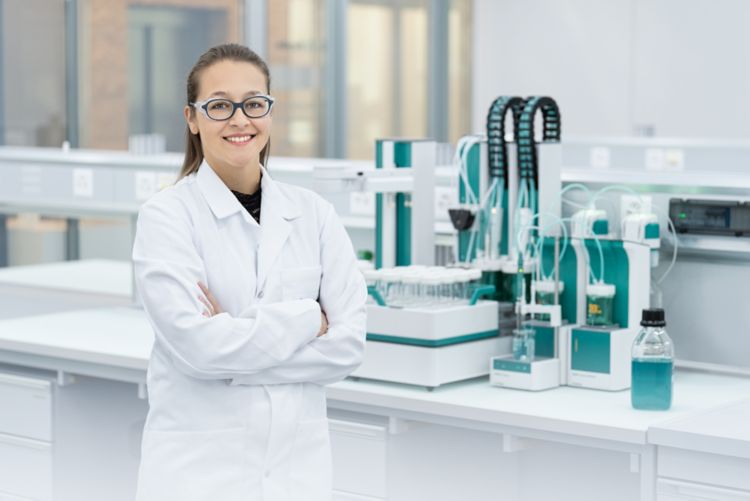

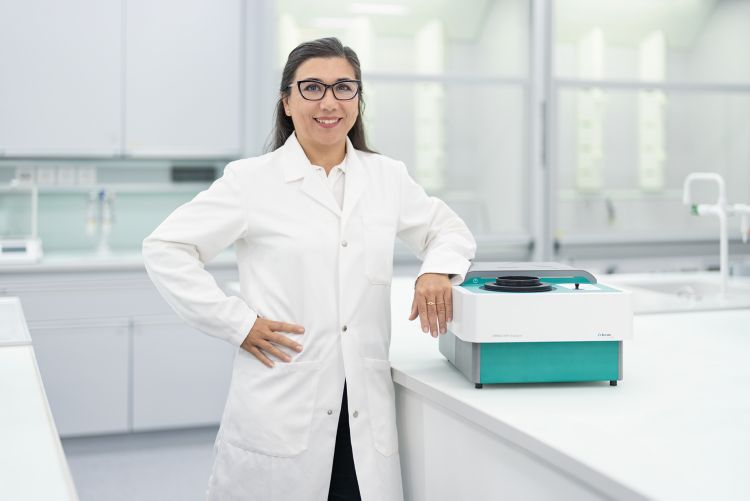
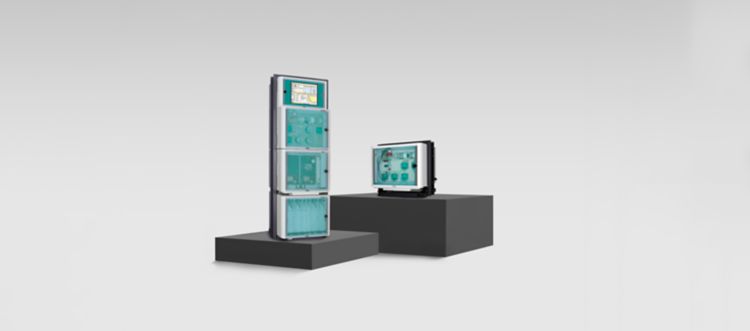

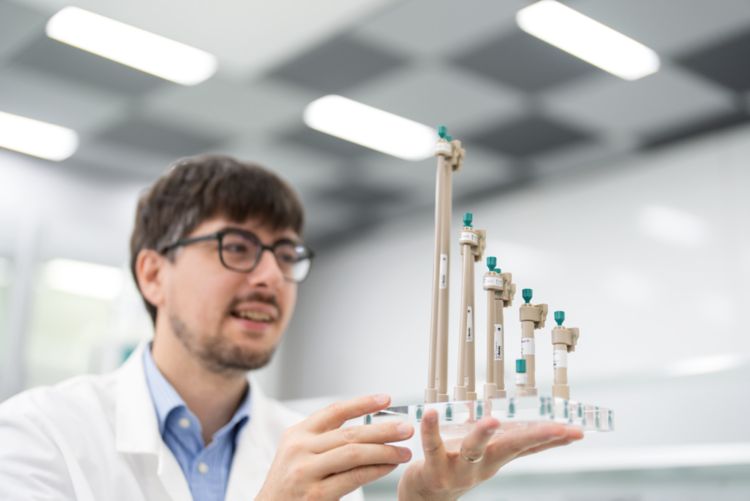
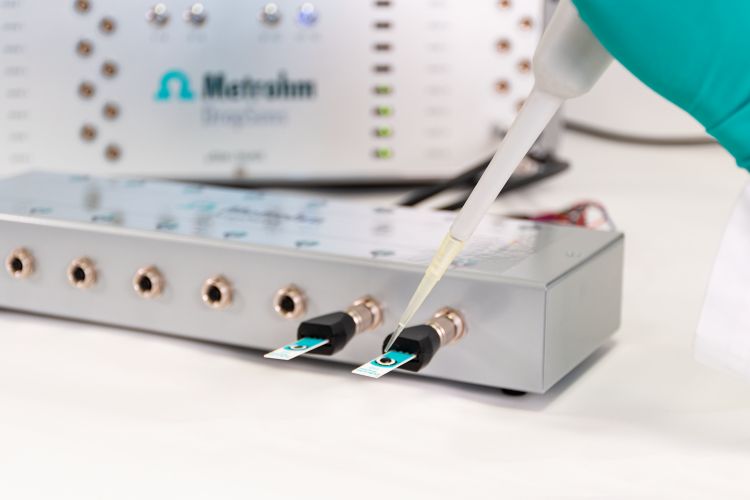
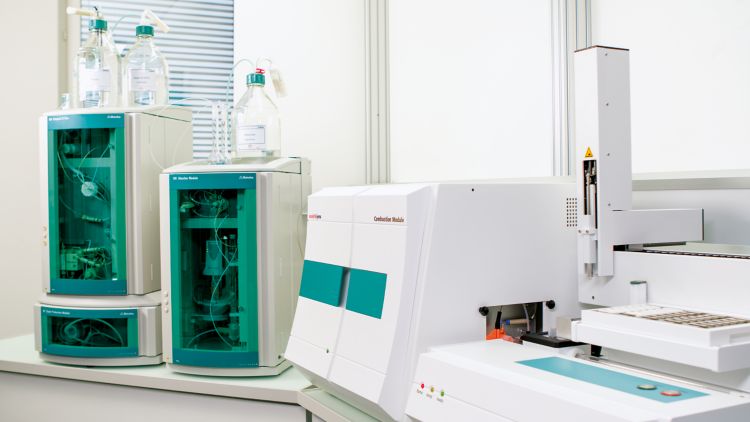
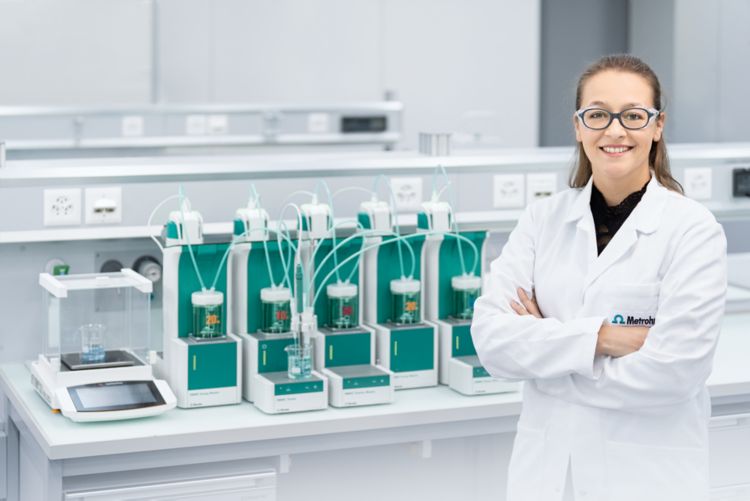











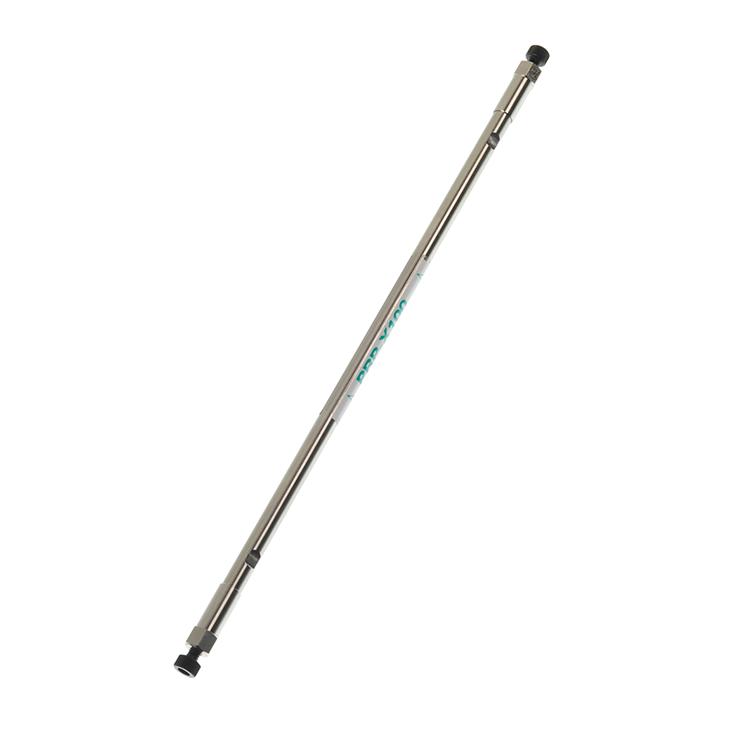
























?$xh-730$&bfc=on)








